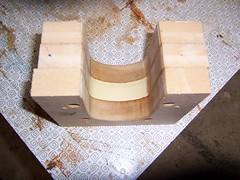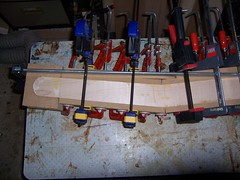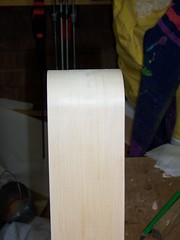wizer
Established Member
- Joined
- 3 Mar 2005
- Messages
- 15,589
- Reaction score
- 1
Hello my wood obsessed chums
I have it in mind to make a small box for my Dad's xmas present. I have the design worked out and I'd like the top to be a veneered panel. A couple of years ago, out of boredom, I bought some packs of walnut burl veneer off ebay for cheap (£1 for 10 sheets IIRC).
I'm not yet sure if I will use one sheet for the top or try to join two to get a book matched effect. I've seen some tutorials online and DC's DVD, so I think I can joint these with probably a hand plane.
The subase will be MDF. I will be veneering the underside too, tho I'd rather not use the burl, so I might try to cut my own veneer for that. Actually the base and the top will be exactly the same but the base will probably be some sort of secondary veneer.
I was just wondering what glue I should use. Can I get away with PVA? Do I need to use a press or will some considerable weights on top be enough?
The plan is\was to get as much done before Weds and then it shouldn't be too taxing to assemble after a bit of R&R
T I A
I have it in mind to make a small box for my Dad's xmas present. I have the design worked out and I'd like the top to be a veneered panel. A couple of years ago, out of boredom, I bought some packs of walnut burl veneer off ebay for cheap (£1 for 10 sheets IIRC).
I'm not yet sure if I will use one sheet for the top or try to join two to get a book matched effect. I've seen some tutorials online and DC's DVD, so I think I can joint these with probably a hand plane.
The subase will be MDF. I will be veneering the underside too, tho I'd rather not use the burl, so I might try to cut my own veneer for that. Actually the base and the top will be exactly the same but the base will probably be some sort of secondary veneer.
I was just wondering what glue I should use. Can I get away with PVA? Do I need to use a press or will some considerable weights on top be enough?
The plan is\was to get as much done before Weds and then it shouldn't be too taxing to assemble after a bit of R&R
T I A



































